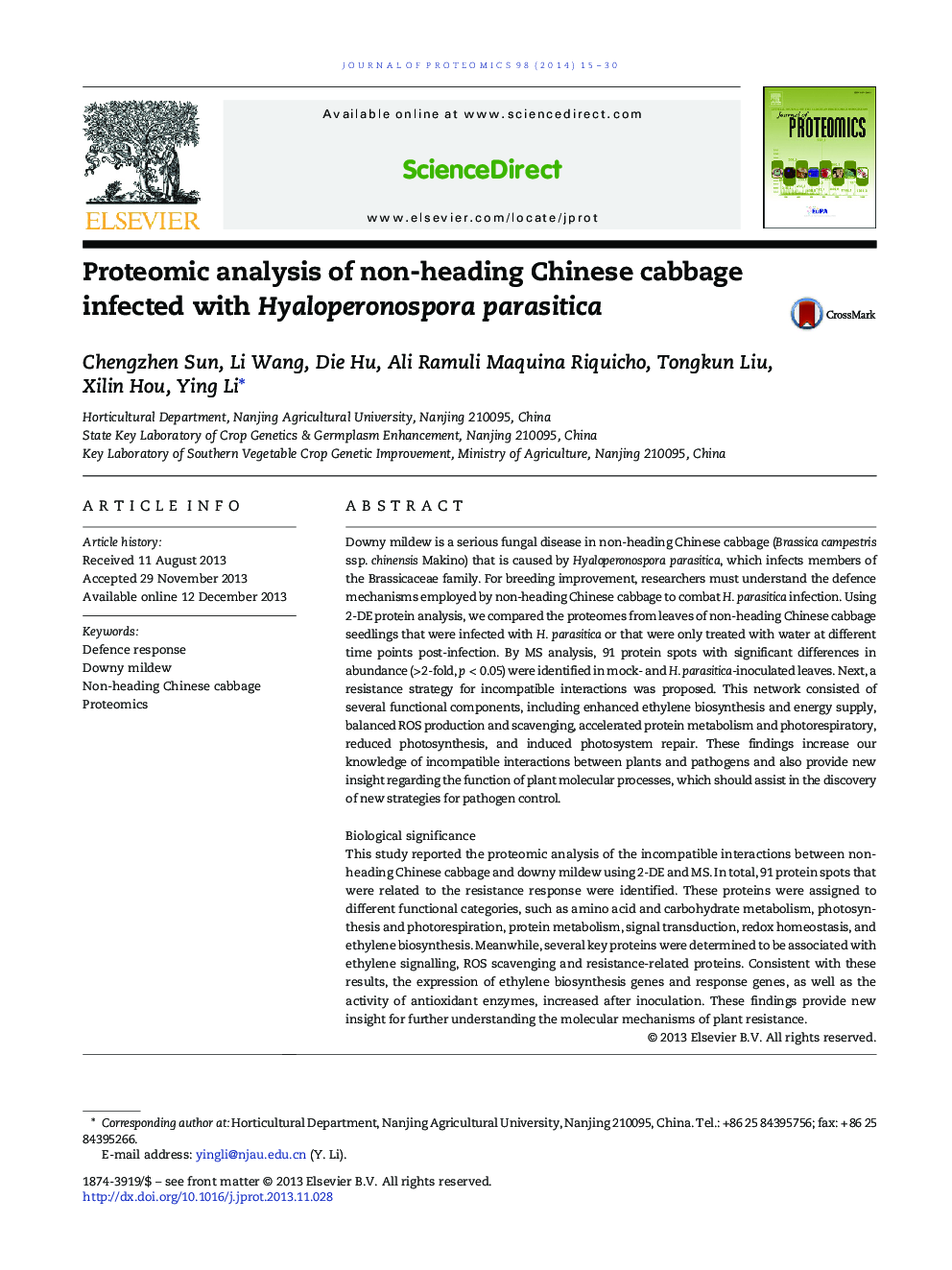| Article ID | Journal | Published Year | Pages | File Type |
|---|---|---|---|---|
| 7636384 | Journal of Proteomics | 2014 | 16 Pages |
Abstract
Downy mildew is a serious fungal disease in non-heading Chinese cabbage (Brassica campestris ssp. chinensis Makino) caused by Hyaloperonospora parasitica. For breeding improvement, researchers must understand the defence mechanisms of non-heading Chinese cabbage against H. parasitica infection. The morphological and physiological changes following H. parasitica infection were monitored (Fig. 1). We compared the proteomes from leaves of non-heading Chinese cabbage seedling that had or had not been infected with H. parasitica at different time points post-infection by 2-DE. By MS analysis, 91 protein spots with significant differences in abundance (> 2-fold, p < 0.05) were identified in mock- and H. parasitica-inoculated leaves and divided into 10 functional classes (Figs. 2, 3). In this study, 8 identified protein spots were found to be involved in ethylene biosynthesis (Fig. 4). The result showed that the ethylene may play an important role in the defence mechanism against H. parasitica attack. This hypothesis was demonstrated by the further results. Firstly, the transcriptional level of ethylene biosynthesis and response genes was up-regulated by downy mildew affect (Fig. 5). Secondly, compared to the control, the emission of ethylene was strongly increased in the first stage (0-48 h) after pathogen attack in the seedling leaves (Fig. 6). These data imply that ethylene may be positively correlated with the resistance of non-heading Chinese cabbage to downy mildew. Based on the proteomics data, a H. parasitica-responsive protein network was proposed with most of the 91 pathogen-responsive proteins identified in non-heading Chinese cabbage seedling leaves (Fig. 7).143
Related Topics
Physical Sciences and Engineering
Chemistry
Analytical Chemistry
Authors
Chengzhen Sun, Li Wang, Die Hu, Ali Ramuli Maquina Riquicho, Tongkun Liu, Xilin Hou, Ying Li,
